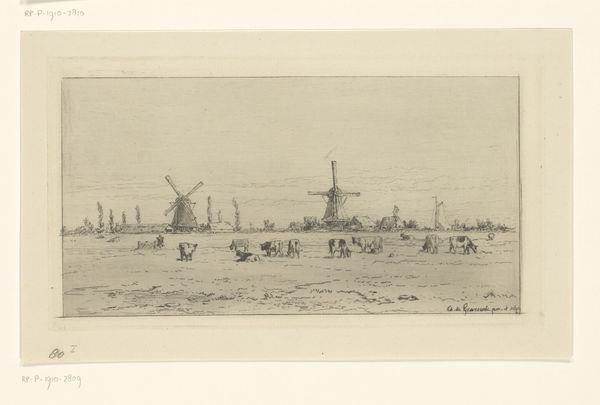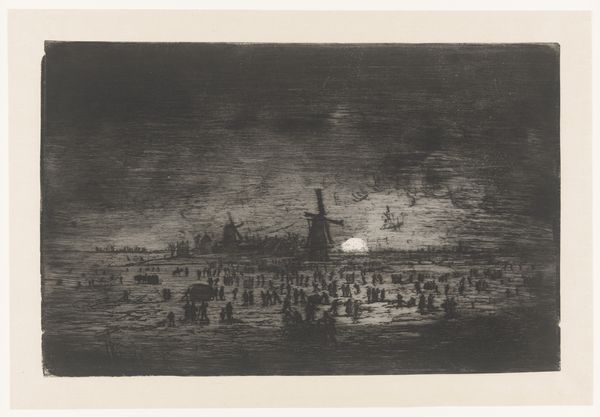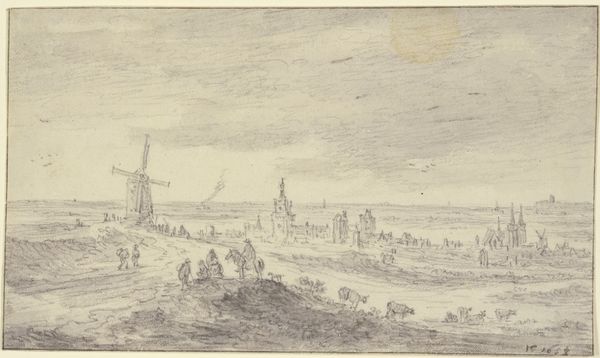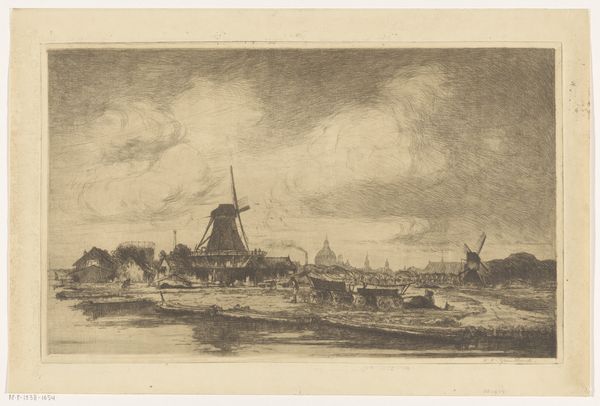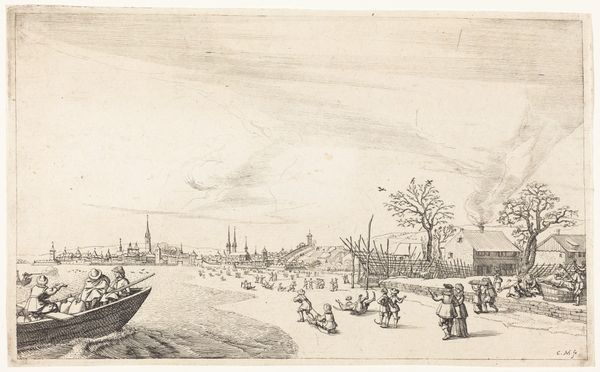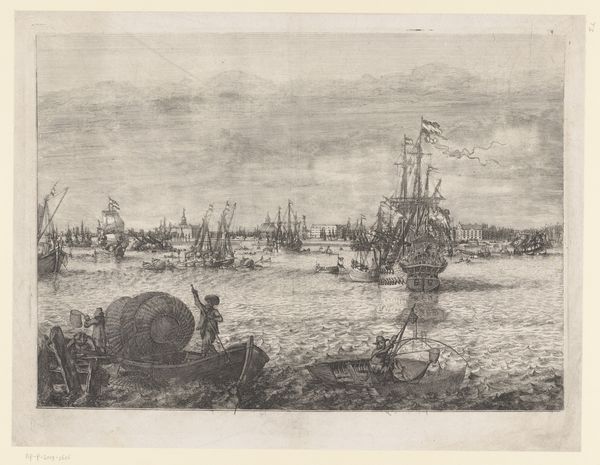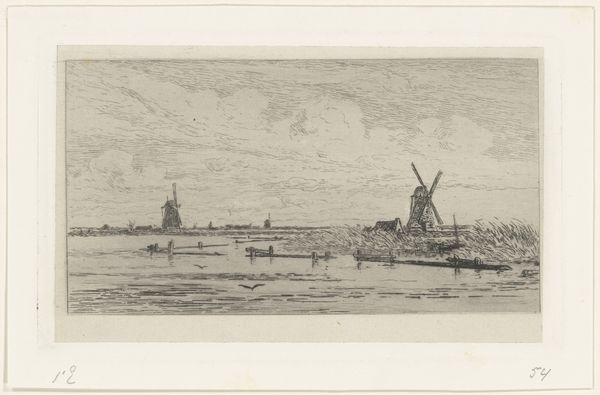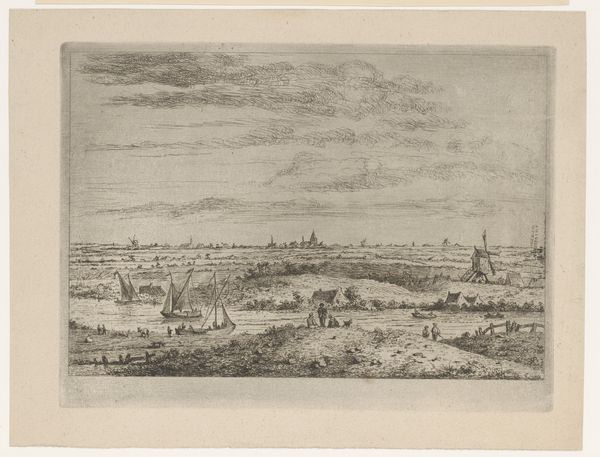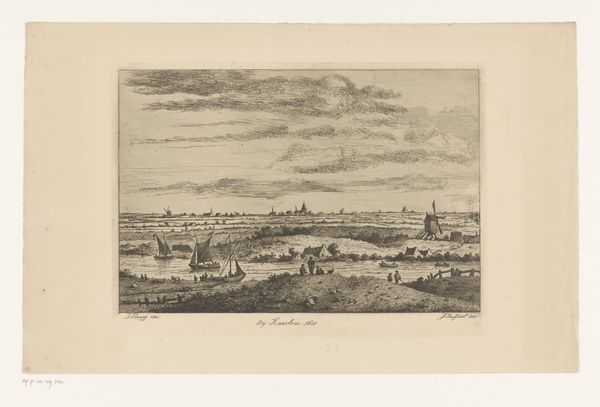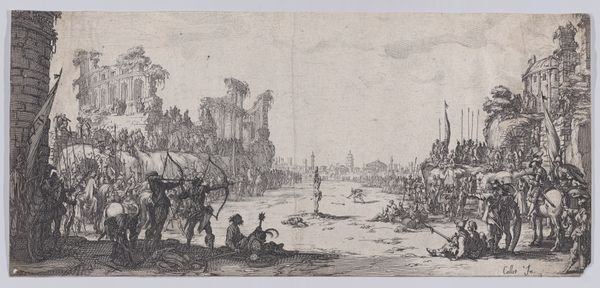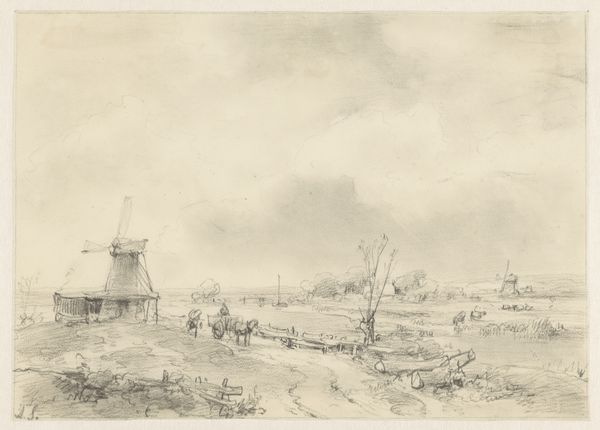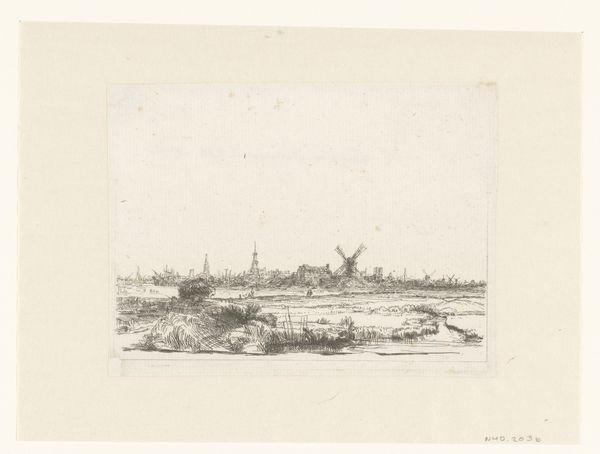
print, etching
#
dutch-golden-age
# print
#
etching
#
old engraving style
#
landscape
#
genre-painting
#
watercolor
#
realism
Dimensions: height 319 mm, width 489 mm
Copyright: Rijks Museum: Open Domain
This is a Dutch winter landscape with windmills and skaters, an etching made by Ludovic Napoléon Lepic. The composition is dominated by a wide, flat expanse, where the pale sky meets the icy ground, punctuated by the silhouettes of windmills and distant buildings. The artist's treatment of light and shadow is striking. Lepic uses the etching technique to its fullest, creating subtle gradations of tone that evoke the bleak, cold atmosphere of a winter's day. Notice how the dense network of fine lines in the foreground creates a sense of depth and texture, pulling us into the scene. The semiotic here is the skating figures, their dark forms contrasting against the white ice. They appear less as individual people and more as signifiers of life and movement amid the cold, still landscape. The horizon line, where the sky meets the land, acts as a kind of visual hinge, emphasizing the flatness of the Dutch landscape. The windmills, however, are not static objects, their arms reaching up and breaking the horizontal monotony, becoming visual reminders of human intervention in the natural world. These are all elements that transform a simple landscape into a powerful expression of the human condition.
Comments
rijksmuseum about 2 years ago
⋮
Ludovic Napoléon Lepic is one of the original French Impressionists. He painted, but was also an innovative printmaker. He only deemed an etching to be art when the printmaker printed his own copper plate and inked it in different ways. He called this method ‘l’eau-forte mobile,’ or variable etching. The impressions displayed here demonstrate what he meant. The differences are exclusively due to various ways of inking the plate.
Join the conversation
Join millions of artists and users on Artera today and experience the ultimate creative platform.
